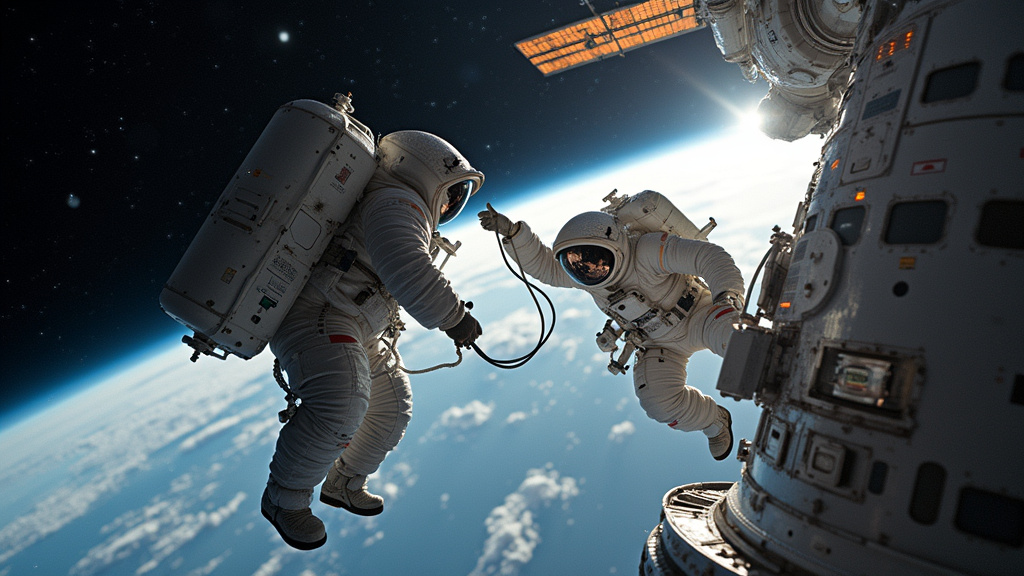A new era of cargo resupply for the International Space Station (ISS) has begun with the successful launch of Northrop Grumman’s first Cygnus XL spacecraft. The advanced vehicle, designated NG-23, lifted off aboard a SpaceX Falcon 9 rocket from Cape Canaveral Space Force Station in Florida on September 14, 2025, at 6:11 p.m. EDT. This mission marks a significant upgrade for the Cygnus program, introducing a larger, more capable spacecraft designed to deliver substantially more cargo and scientific equipment to orbit.
A More Capable Cygnus XL
The Cygnus XL represents a considerable evolution from its predecessors. It features a pressurized cargo module that is approximately 1.6 meters longer than previous versions, increasing its cargo capacity by 33 percent. This enhanced volume allows the Cygnus XL to carry over 11,000 pounds (nearly 5,000 kg) of supplies, including crucial scientific experiments, hardware, and consumables for the ISS crew. Ryan Tinter, vice president of Civil Space Systems at Northrop Grumman, highlighted that this increased capacity is critical for delivering more science and driving down the cost per kilogram to NASA, underscoring its role in a thriving commercial space economy. The Cygnus XL has a pressurized cargo volume of 36 cubic meters, a notable increase from earlier models.
Mission Details and Payload
The NG-23 mission, named the S.S. William “Willie” C. McCool in honor of the pilot of the ill-fated Space Shuttle Columbia mission STS-107, is the 23rd Cygnus flight and the 22nd under NASA’s Commercial Resupply Services (CRS) contract. The spacecraft is carrying a diverse payload aimed at supporting ongoing research and operations aboard the ISS. Among the critical cargo are materials for experiments such as producing semiconductor crystals in space, developing improvements for cryogenic fuel tanks, and a specialized UV light system to prevent microbial growth in water systems. Other supplies include spare parts, oxygen, nitrogen, and a variety of food items for the crew. The mission is expected to remain at the ISS for approximately 200 days, until March 2026.
SpaceX Falcon 9 and Launch Operations
The successful launch was facilitated by a SpaceX Falcon 9 rocket, specifically the booster with tail number B1094, marking its fourth flight. This booster has a history of supporting notable missions, including Starlink launches, Axiom Mission 4, and NASA’s Crew-11. Following stage separation, the Falcon 9 booster successfully landed at Landing Zone 2 at Cape Canaveral Space Force Station, continuing SpaceX’s streak of booster recoveries. The Cygnus XL spacecraft was deployed from the Falcon 9’s upper stage approximately 14 minutes after liftoff, commencing its journey to the ISS.
Arrival at the Space Station
The Cygnus XL is scheduled to arrive at the ISS on Wednesday, September 17, 2025. NASA astronaut Jonny Kim, with assistance from Zena Cardman, will operate the Canadarm2 robotic arm to capture the spacecraft. Following capture, ground control teams will guide the Cygnus XL to its berthing port on the Unity module for unloading. This robotic capture procedure is a standard element of Cygnus missions, ensuring the safe attachment and integration of the cargo vehicle with the orbiting laboratory.
Background and Future Implications
The NG-23 mission’s launch was advanced in the schedule due to the indefinite delay of the preceding Cygnus NG-22 mission, which sustained damage during transport. This incident led NASA and Northrop Grumman to replace NG-22 with NG-23, demonstrating the program’s adaptability and the importance of maintaining resupply continuity. The introduction of the Cygnus XL signifies a major step in expanding resupply capabilities for the ISS and supporting future commercial space endeavors, including potential partnerships for commercial space stations. Northrop Grumman is already working on three more Cygnus XLs and developing a future version capable of autonomous docking. This major global event in space exploration highlights the ongoing collaboration and advancements in space logistics, a critical component of sustained human presence in low Earth orbit and future space missions, including those to the Moon and Mars. This launch is a significant event in the realm of space events, contributing to the broader narrative of human space exploration.





